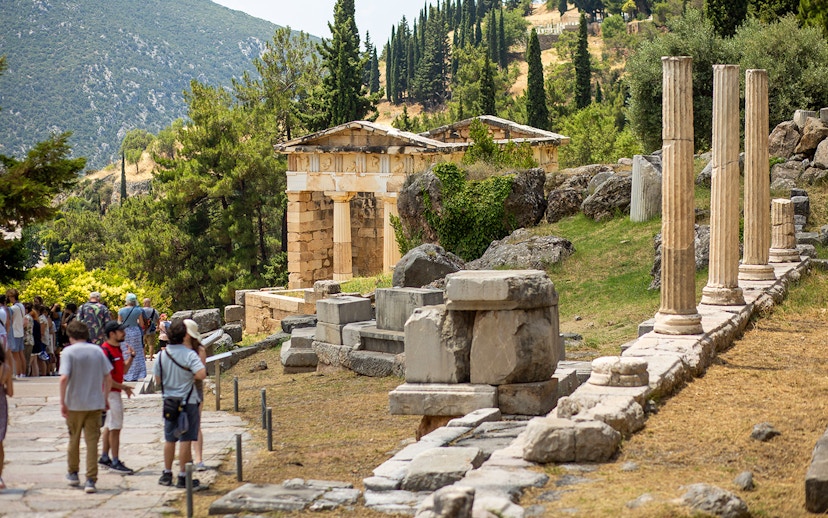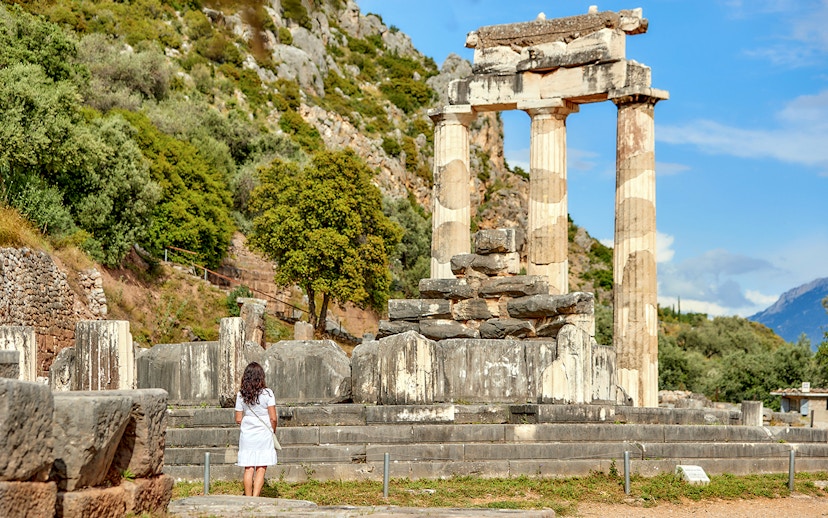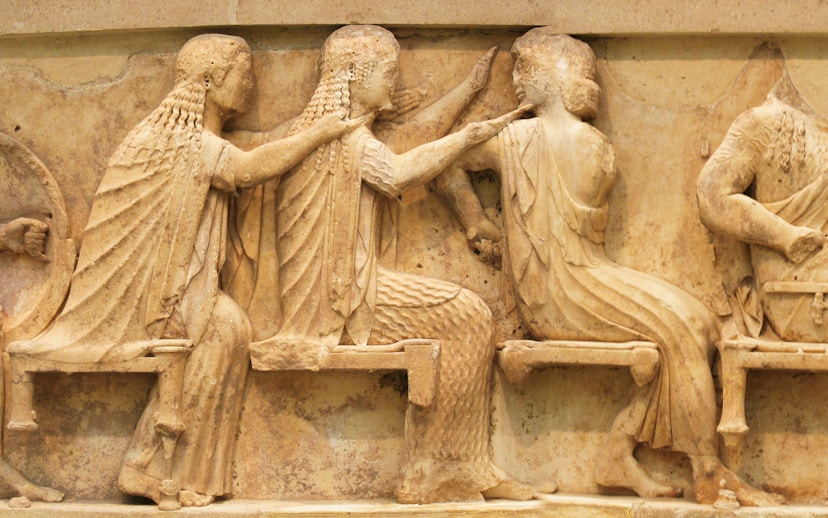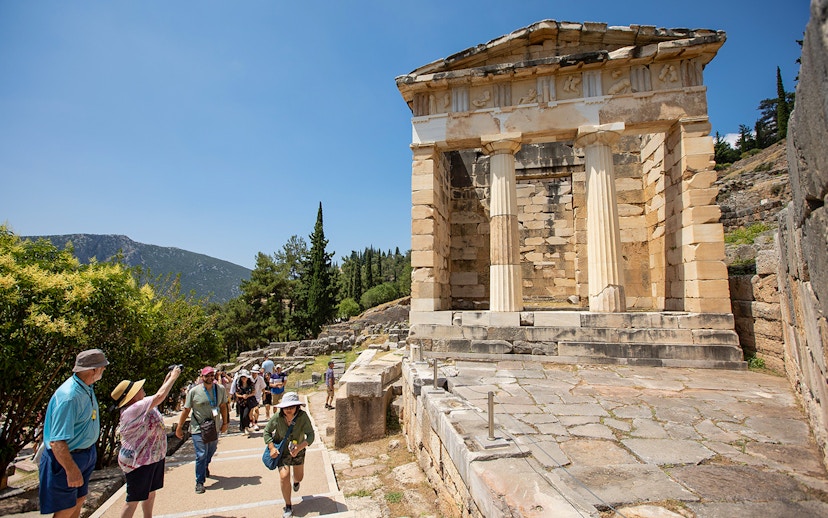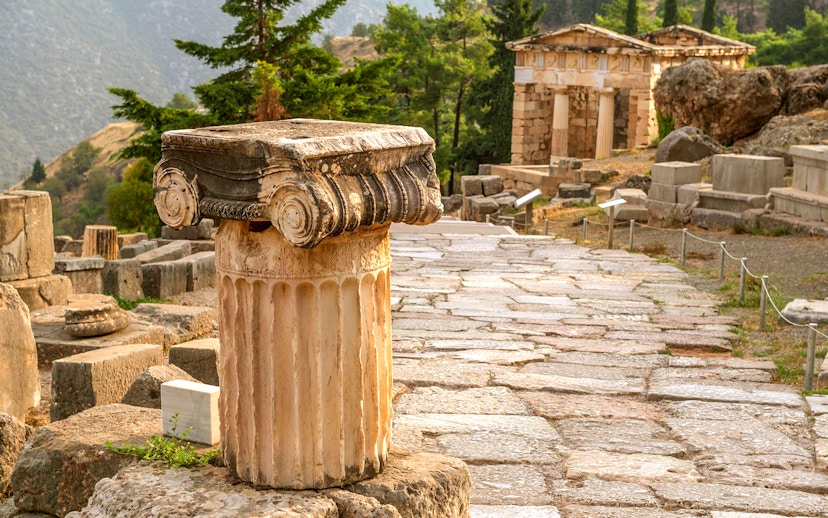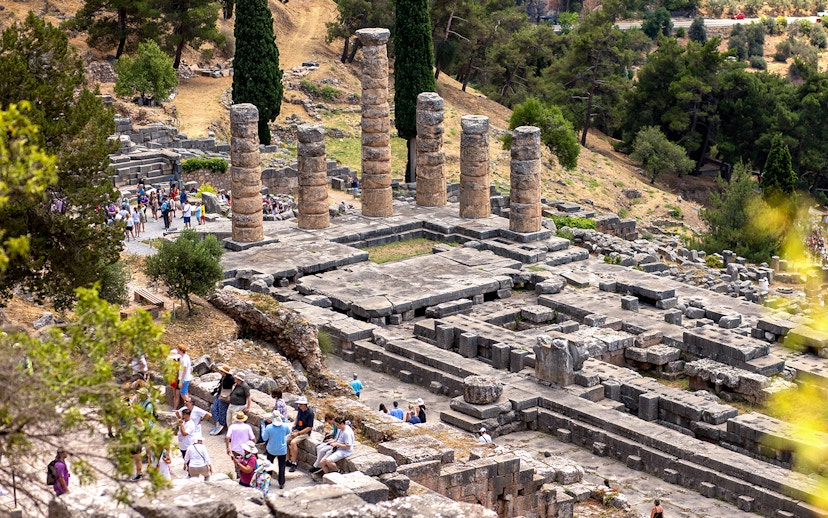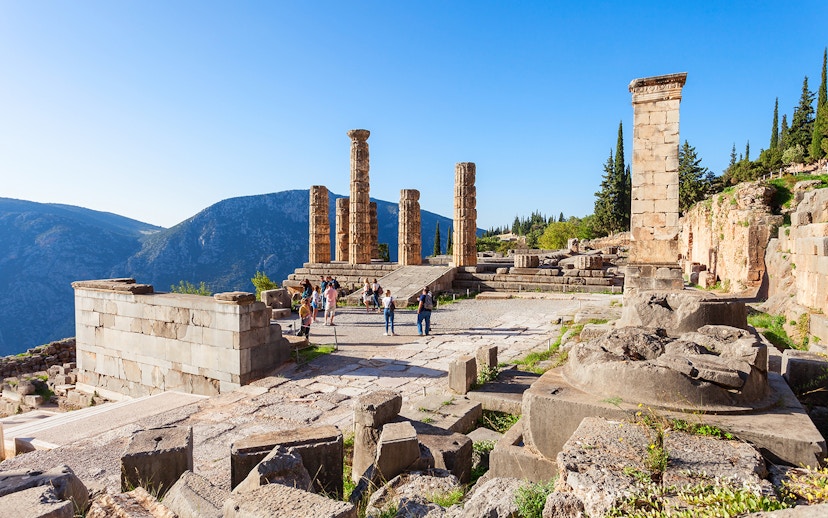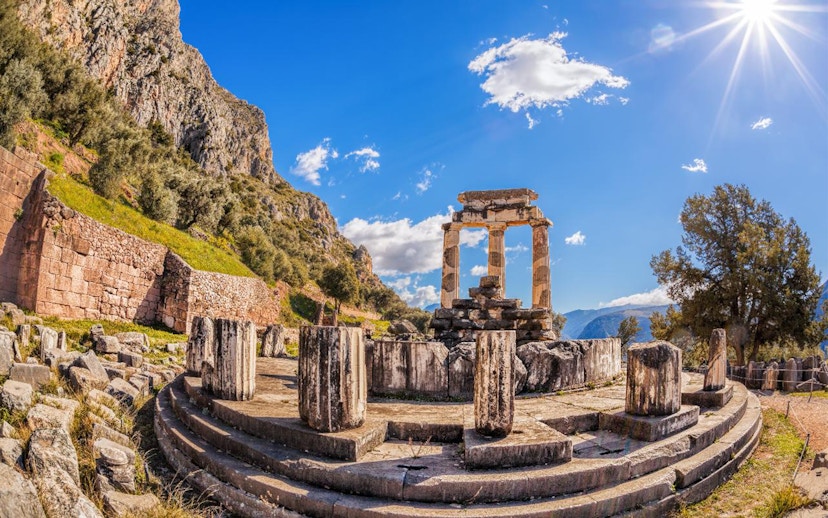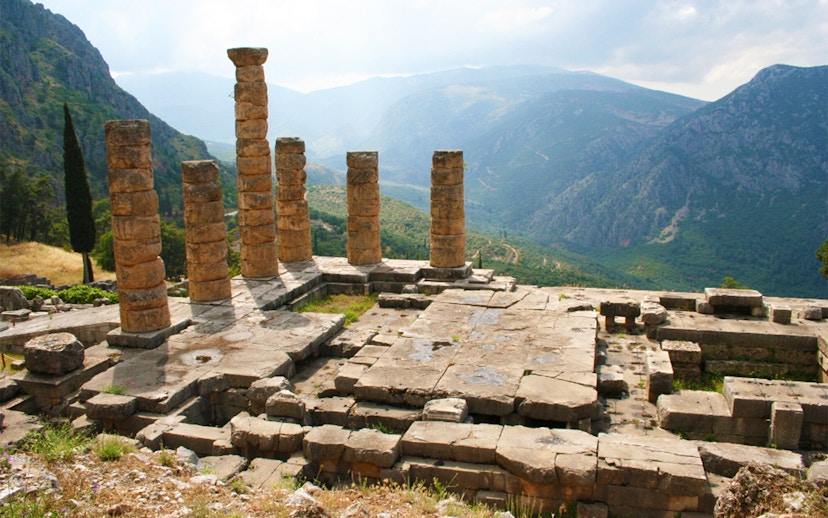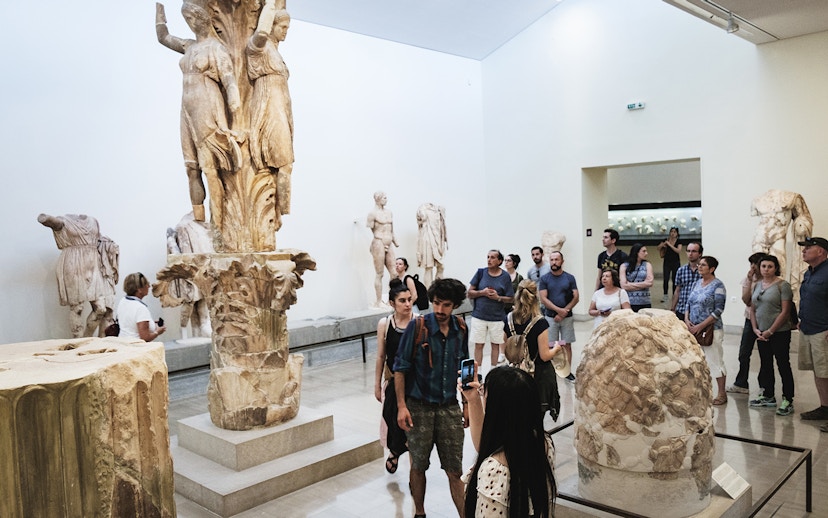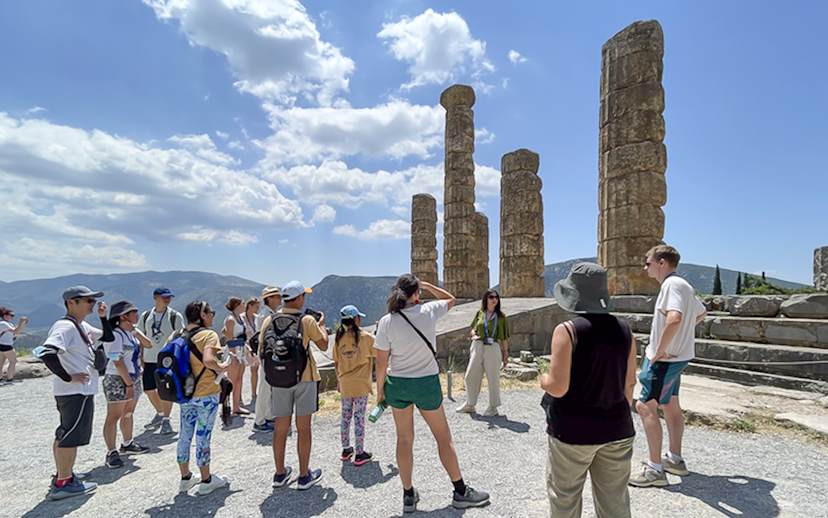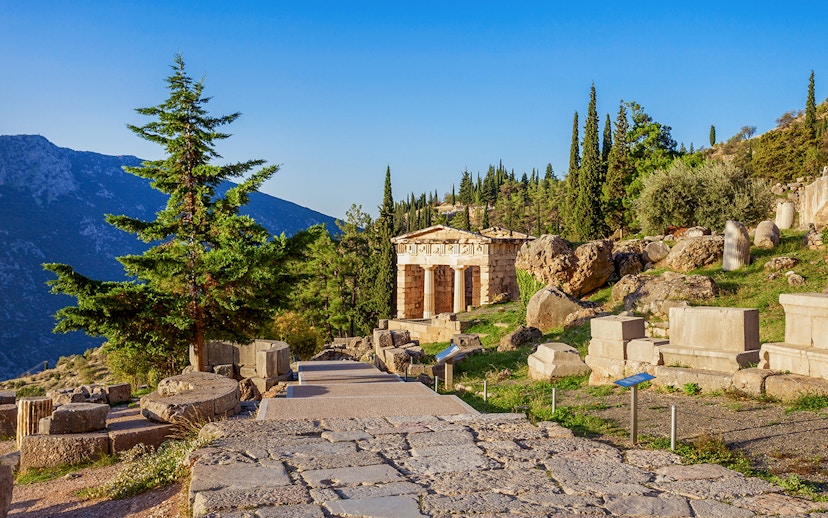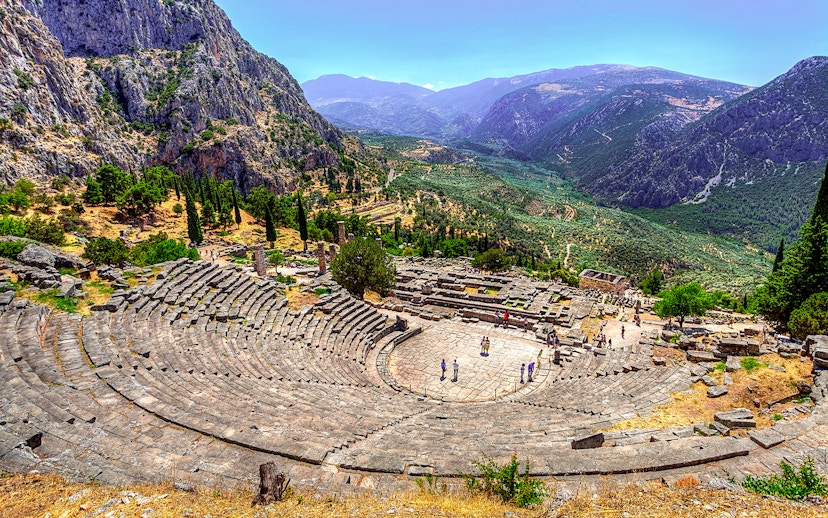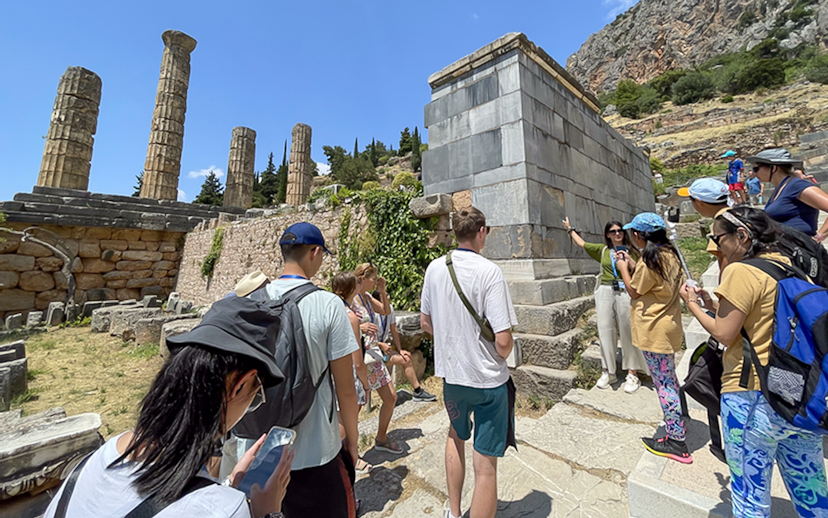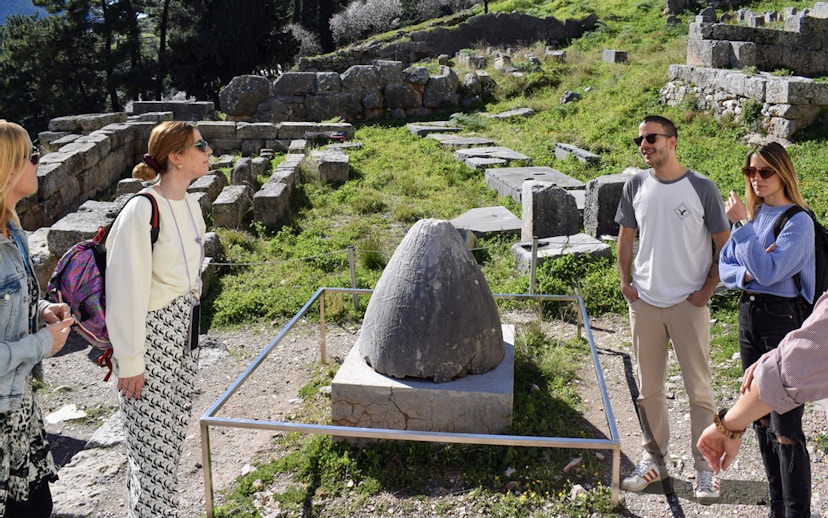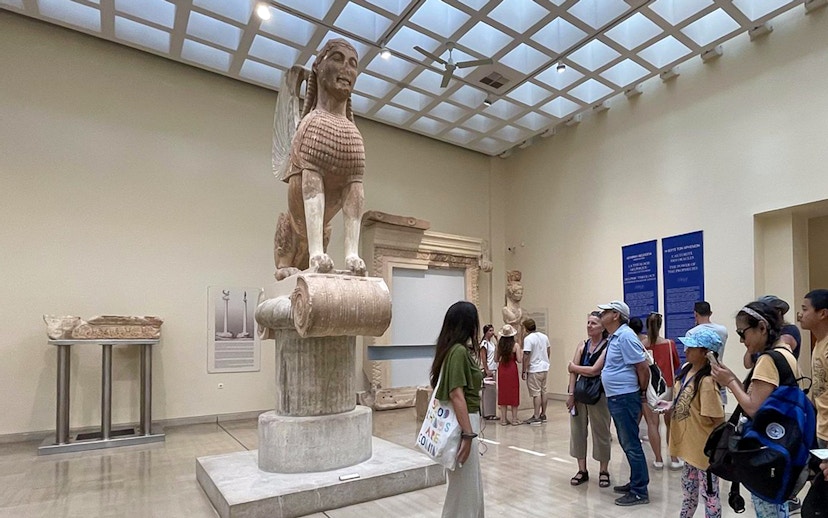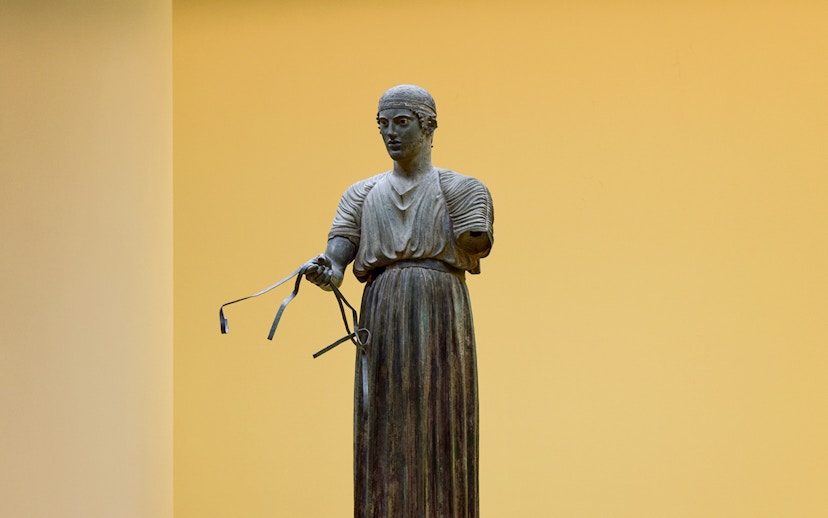The Temple of Apollo | A shrine to the patron god of Delphi
In Greek mythology, Apollo, the god of prophecy, claimed Delphi as the site of his sacred sanctuary after slaying the serpent Pytho, who once guarded it. He established his Oracle, Pythia, at Delphi, transforming it into one of the most important Panhellenic religious centers. Over time, multiple temples were constructed in Apollo's honor, with the most famous being the 4th-century BCE temple, whose impressive ruins remain today.
How to access:
Access to the Temple of Apollo is included with your Delphi ticket. Whether you prefer a guided tour, an audio tour, or a more independent day tour, all options provide entry to the temple and offer valuable insights into its history and significance.
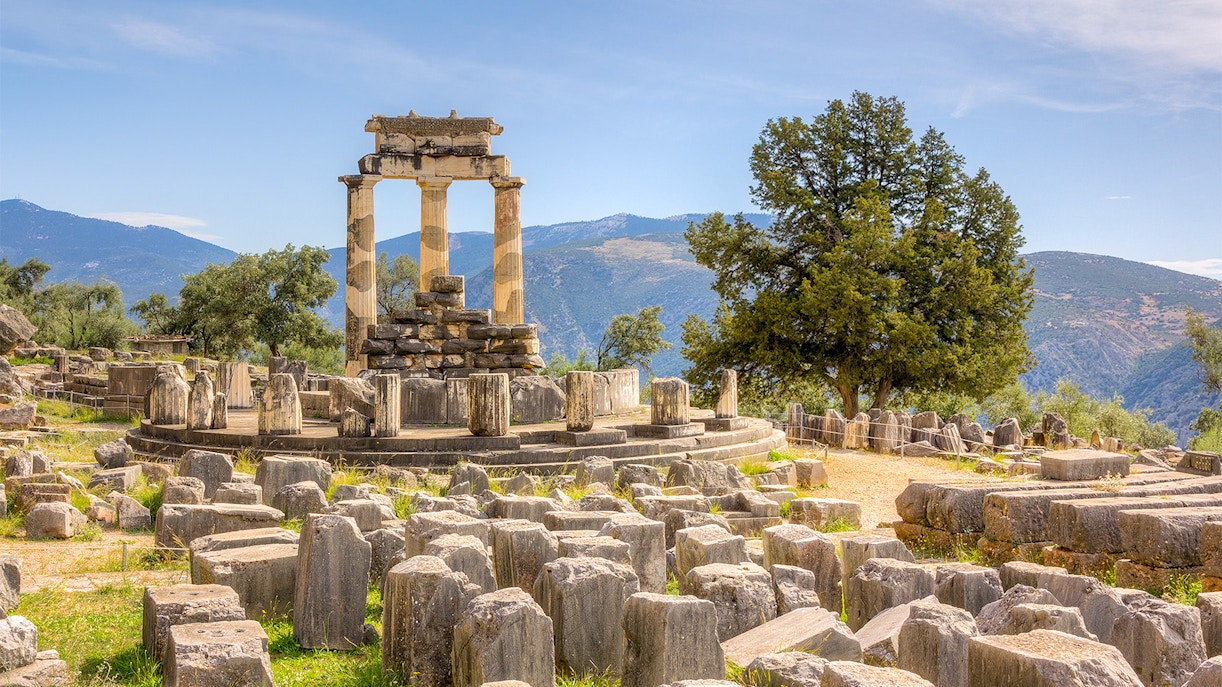


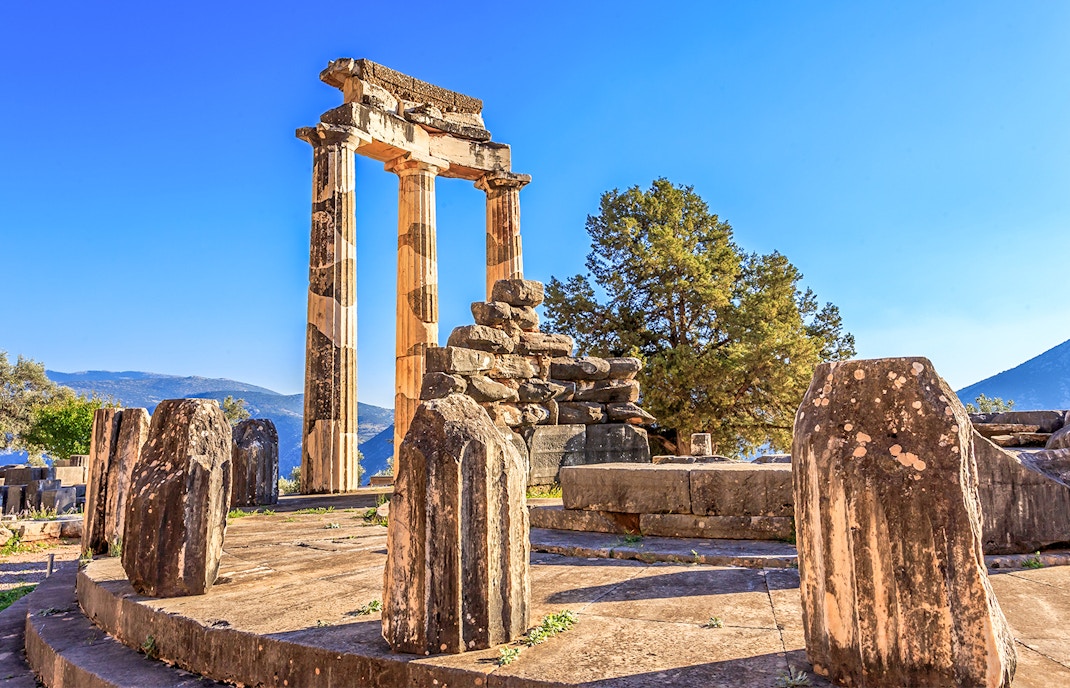
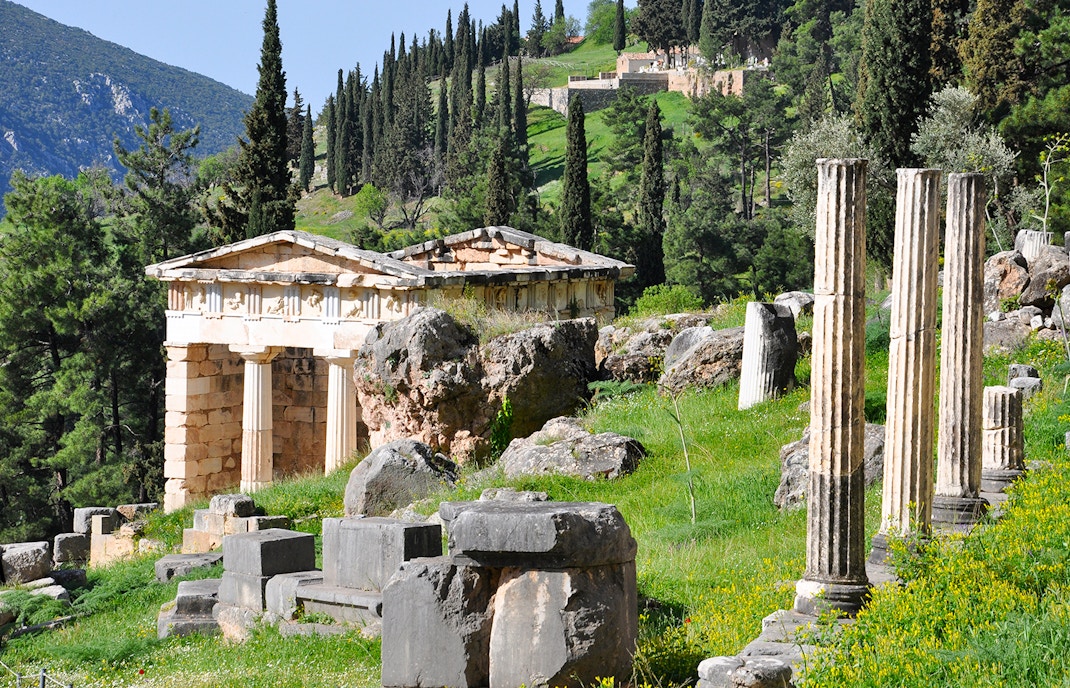
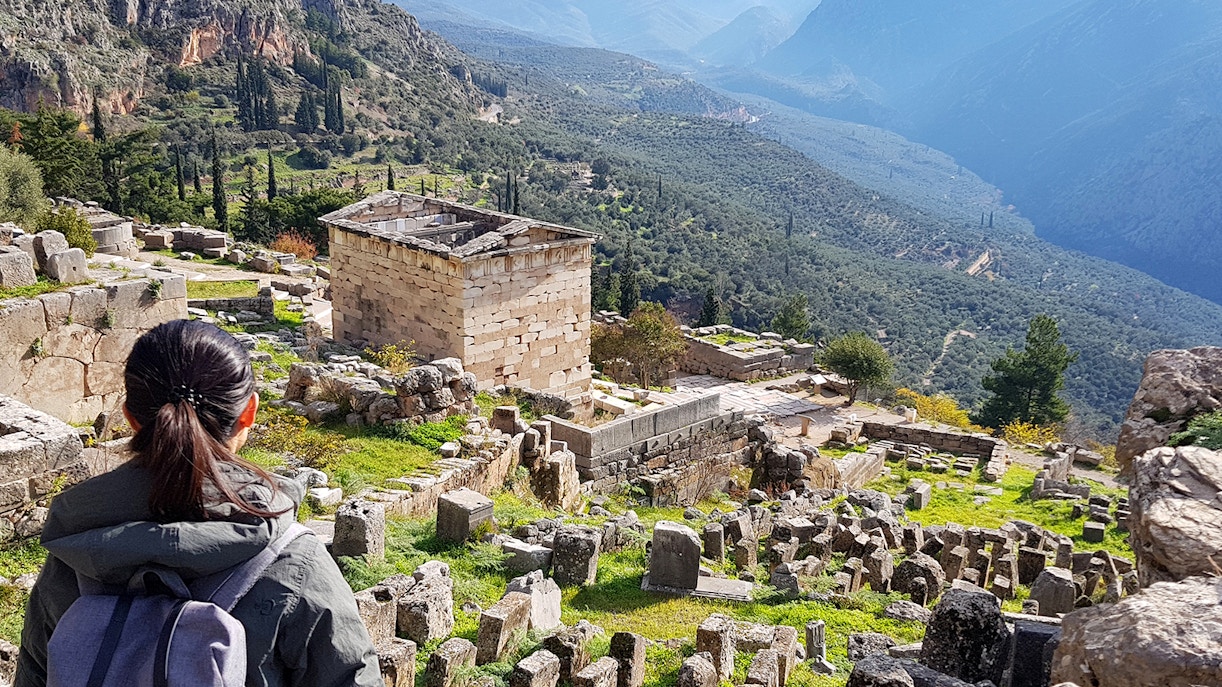


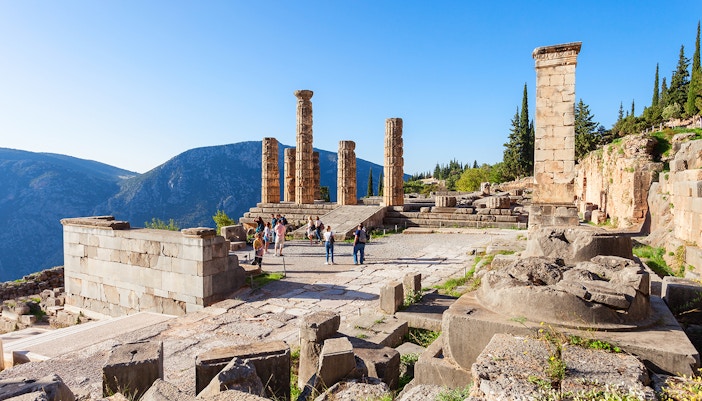

.svg?auto=format&w=156&h=48&q=90&crop=faces&fit=crop)
